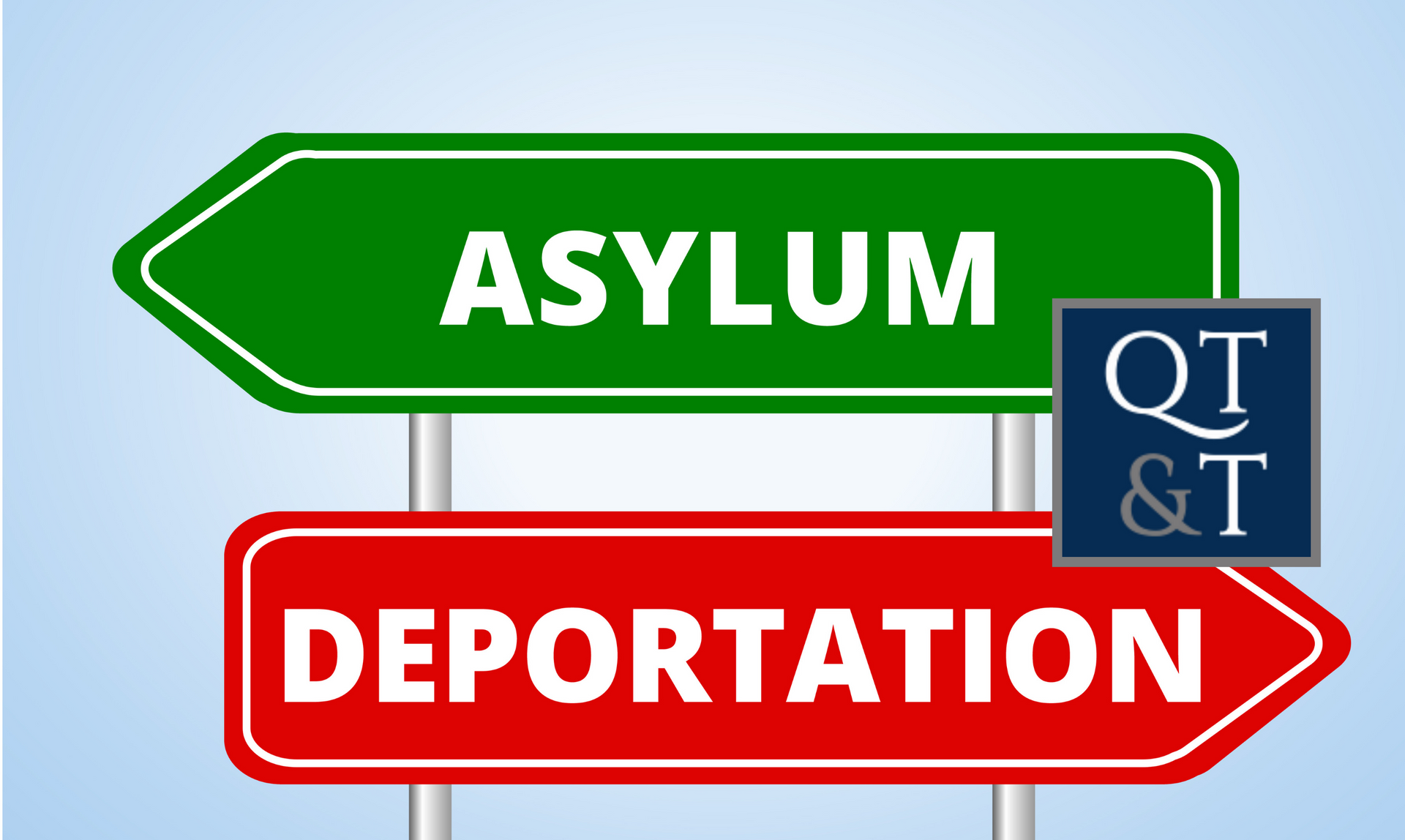🗣️ Fluent in English, Spanish & Portuguese 🌍
The Ongoing Debate on Amnesty in the United States: Time for a New Discussion?
In the realm of U.S. immigration law, amnesty stands as a significant yet contentious concept. It is a topic that intertwines legal intricacies with human stories, reflecting the diverse tapestry of American society. This article aims to provide a clear understanding of amnesty's role in U.S. immigration, tracing its historical roots and exploring its potential future.

Understanding Amnesty
Amnesty, in the context of immigration, is a governmental act of pardoning individuals for violations of immigration laws, often leading to legal status. It represents a beacon of hope for many navigating the challenging paths of U.S. immigration.
Historical Perspective on Amnesty
Immigration Reform and Control Act of 1986 (IRCA)
The IRCA was a significant policy change, signed by President Ronald Reagan, which granted amnesty to nearly 3 million undocumented immigrants. This act represented a shift from strict immigration control to recognizing the need for a practical solution for the large undocumented population.
Nicaraguan Adjustment and Central American Relief Act of 1997 (NACARA)
NACARA offered relief and a route to permanent residency for individuals from specific nationalities, reflecting the U.S. response to the unique geopolitical circumstances of the time, including civil unrest and political instability in their home countries.
Deferred Action for Childhood Arrivals (DACA) 2012
DACA, although not a traditional amnesty program, provided temporary protection and work permits to undocumented immigrants brought to the U.S. as children, acknowledging their unique circumstances and ties to American society.
The Current State of the Amnesty Debate
The amnesty debate in the U.S. is sharply divided along political lines. Democrats generally advocate for comprehensive immigration reform, including pathways to citizenship for undocumented immigrants. In contrast, Republicans focus on border security and the rule of law, with concerns about the potential impacts of illegal immigration.
Arguments for a New Amnesty Program
Proponents of a new amnesty program argue that it would bolster the economy, enhance social cohesion, address humanitarian issues, and reduce exploitation of undocumented workers.
Counterarguments
Opponents of amnesty suggest that it might incentivize illegal immigration, strain public resources, and raise fairness issues compared to those who follow legal immigration channels.
The Need for a New Discussion
The complexities of the U.S. immigration system require innovative and humane solutions. A new discussion on amnesty should encompass comprehensive immigration reform, economic impact assessments, strategies for social integration, and a balanced approach that respects both the rule of law and the realities faced by undocumented immigrants.
Conclusion
The amnesty debate is not just a legal issue; it reflects the nation's values, its approach to human rights, and economic policy. It calls for a thoughtful, balanced, and forward-looking discussion that recognizes the complexities of immigration and its impact on the fabric of American society. As America evolves, so should its approach to embracing those who seek to be part of its future, navigating the complex tapestry of amnesty in U.S. immigration policy.

By Jonathan Amador
•
22 Apr, 2024
Discover the essential steps to immigrate to the US as a doctor with our comprehensive guide for international physicians. From educational requirements to visa options, learn how to navigate the complex process and establish your medical career in the United States.

By Jonathan Amador
•
22 Apr, 2024
Unlock the EB-2 NIW Visa process with our comprehensive guide! From eligibility criteria to application steps, understand how this visa category can benefit you. Ready to pursue your American dream? Let's navigate this journey together. #EB2NIW #USVisa #ImmigrationGuide"

By Jonathan Amador
•
18 Mar, 2024
Dive into the legal complexities of Miguel-Peña, et al. v. Garland (2024), where Wendy Carolina Miguel-Peña and her daughter challenge their removal proceedings and asylum application denial. Unravel the arguments, court analysis, and implications, shedding light on procedural requirements, asylum criteria, and the intricate dynamics of immigration law in the United States.

By Jonathan Amador
•
18 Mar, 2024
Explore the legal intricacies of Edwards v. Attorney General (2024), where Karastan L. Edwards challenges the classification of his conviction as an aggravated felony impacting his immigration status. Delve into the arguments, court analysis, and implications of this pivotal case, shedding light on the complex interplay between state court modifications and federal immigration law.

By Jonathan Amador
•
22 Feb, 2024
The E-2 Treaty Investor Visa offers a unique opportunity for individuals from treaty countries to invest in and operate businesses within the United States. However, complexities arise when the approved passport of an E-2 visa applicant or their dependents belongs to a country that does not have a treaty agreement with the U.S. This situation presents a unique set of challenges and considerations for potential investors and their families.

By Jonathan Amador
•
22 Feb, 2024
The H-1B Visa: A Gateway for Global Talent in Specialty Occupations The H-1B visa serves as a crucial bridge for highly skilled professionals from across the globe, offering a unique opportunity to contribute their expertise to the U.S. workforce. This visa category encompasses a wide range of specialty occupations, from accountants and attorneys to software engineers and medical workers, and even extends to distinguished fashion models, showcasing the diversity of talent it attracts. Understanding the H-1B Visa The H-1B visa is designed for temporary nonimmigrant workers in fields that demand a high level of specialized knowledge, typically requiring at least a bachelor's degree or its foreign equivalent. Unique among work visas, it also accommodates distinguished fashion models, highlighting its broad scope. The Distinction of H-1B Status Holding an H-1B visa status is distinct from merely having the visa stamp in one's passport. The status confers the right to work in the U.S. in a specialized role, initially granted for up to three years and renewable in increments up to a total maximum of six years. For those seeking to extend their journey beyond this tenure, transitioning to an employment-based green card is a viable path. Meeting the H-1B Requirements To qualify for an H-1B visa, candidates must secure a job offer from a U.S. employer in a specialty occupation that matches their educational and professional background. The role must offer prevailing wages and meet the educational criteria, typically a U.S. bachelor's degree or equivalent. Selection in the H-1B visa lottery is a critical step for those subject to the annual cap, marking the beginning of their application journey. Sponsorship: The Employer's Role H1B sponsorship is a pivotal process that allows U.S. companies to bring foreign professionals to the United States for temporary work in specialty occupations. The responsibility of filing the H-1B visa petition with USCIS lies with the U.S. employer. Successful approval of the petition ushers in the employer's duty to ensure the H-1B employee is accorded the same job benefits as their counterparts, including bonuses, health benefits, and other employment perks, thereby maintaining equity within the workplace. The Application Process: A Step-by-Step Overview The application process for an H-1B visa involves meticulous preparation, starting with the employer filing a Labor Condition Application (LCA) with the Department of Labor (DOL) for certification. Following certification, the employer assembles an H-1B petition, including Form I-129, the certified LCA, and a comprehensive package of supporting documents, such as proof of the candidate's qualifications and details of the job offer. For candidates outside the U.S. or those changing status, obtaining an H-1B visa stamp through consular processing is the next step. This involves completing Form DS-160, paying the visa application fee, and attending an interview at a U.S. consulate or embassy, armed with the necessary documentation, including the I-797 H-1B approval notice and a valid passport. Extension and Renewal: Ensuring Continuity For H-1B workers seeking to extend their stay beyond the initial authorization, the renewal process mirrors the initial application. Employers must initiate this process well in advance of the visa's expiration, filing a new I-129 petition with USCIS to extend the candidate's H-1B status, thereby ensuring uninterrupted employment in their specialty occupation. As the landscape of work continues to evolve, the H-1B visa remains a pivotal pathway for professionals seeking to leverage their specialized skills on the global stage, embodying the spirit of collaboration and growth that defines the modern workforce.
CONTACT US
950 S. Winter Park Dr., Suite 207
Casselberry, FL 32707
PRACTICE AREAS





